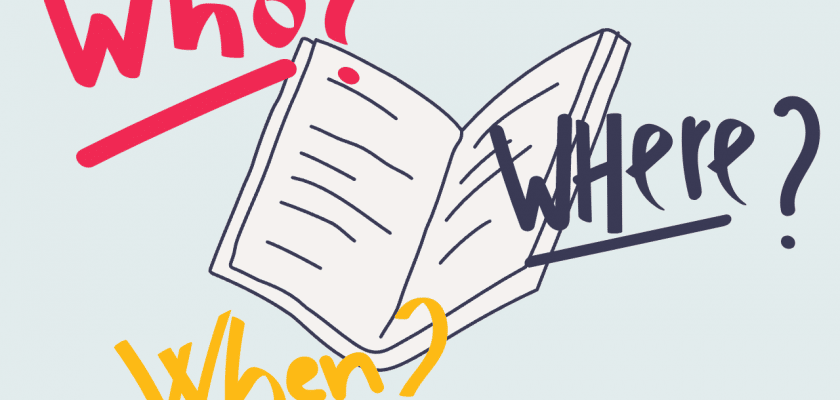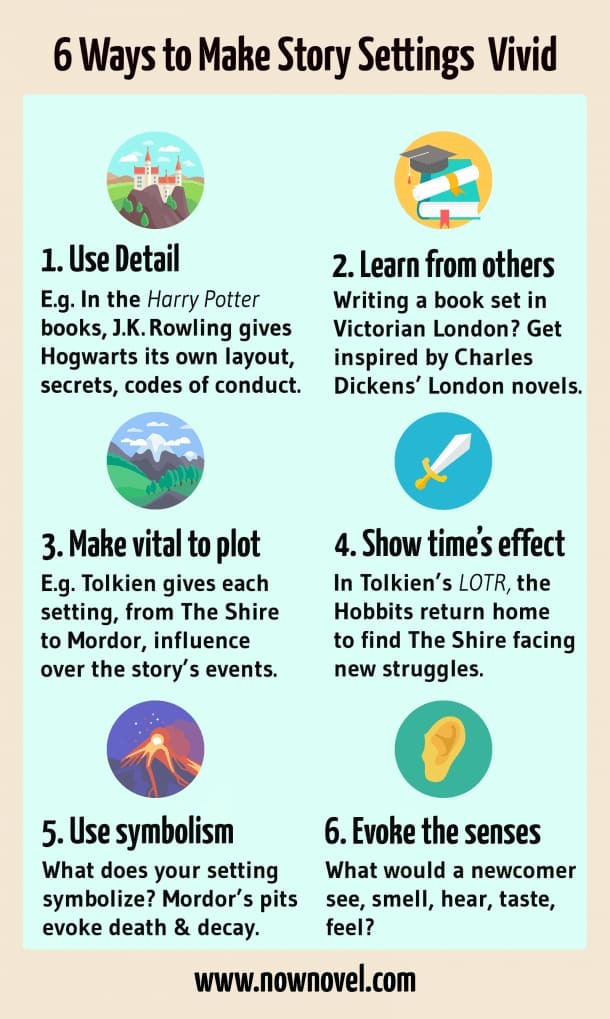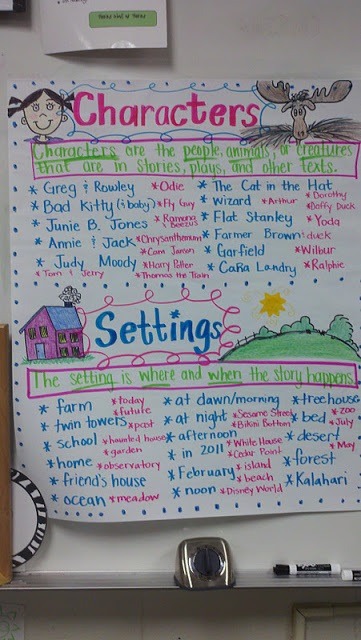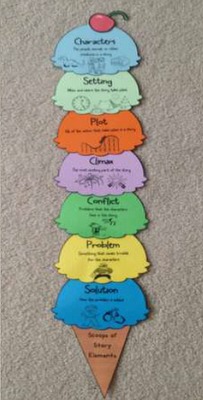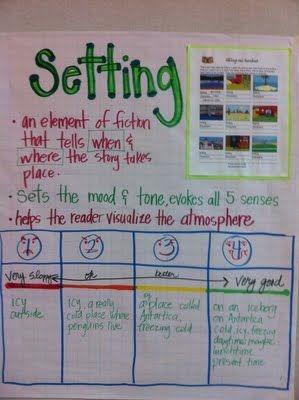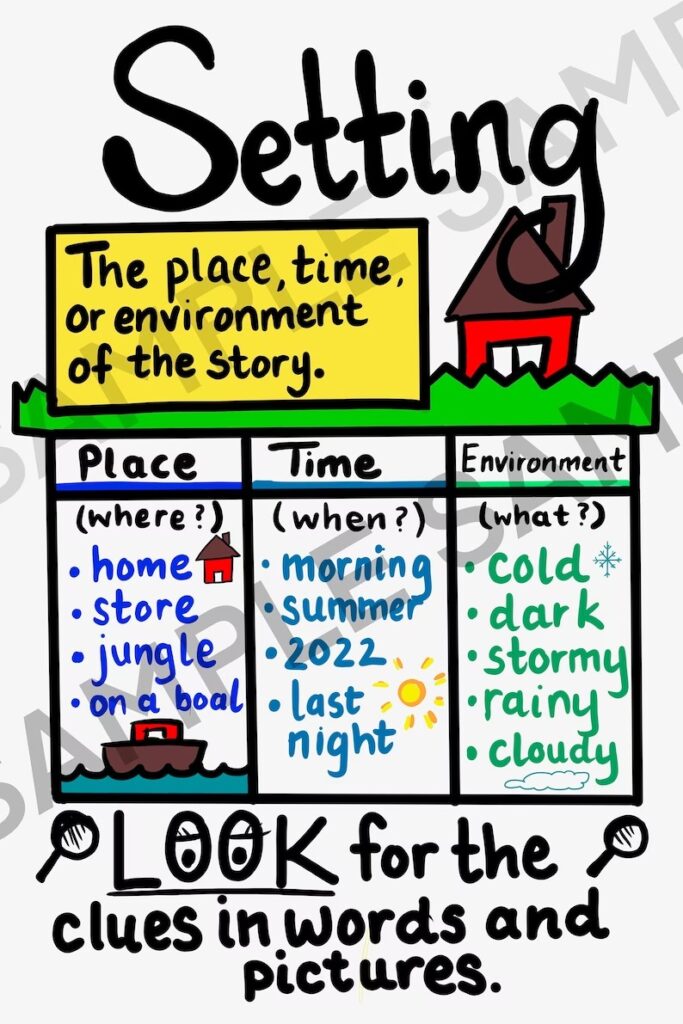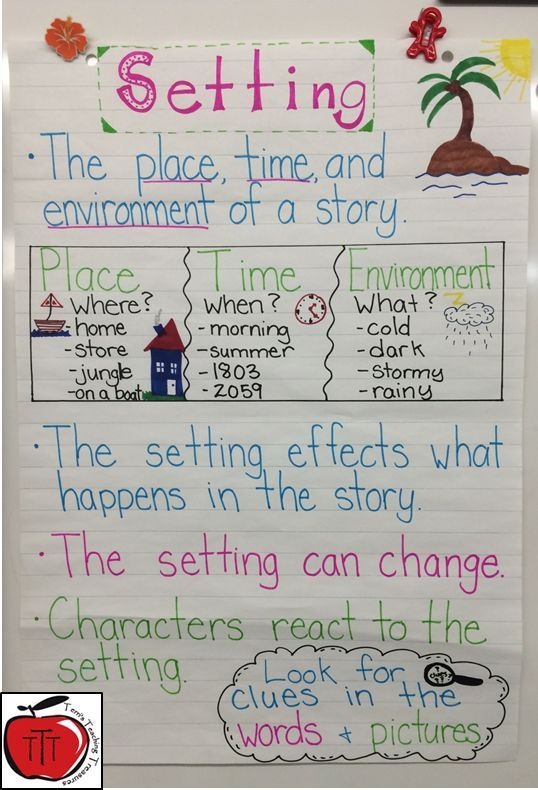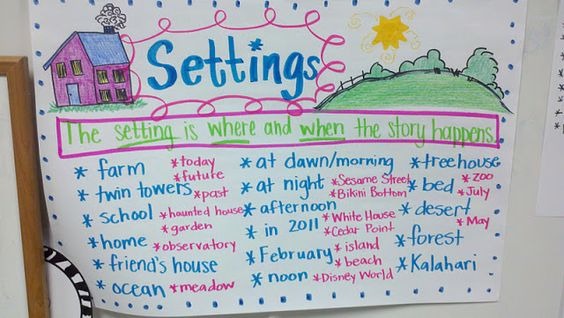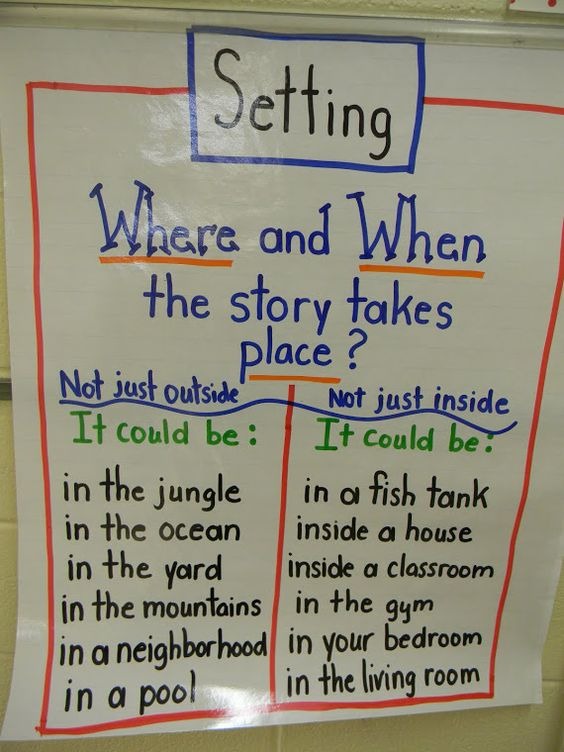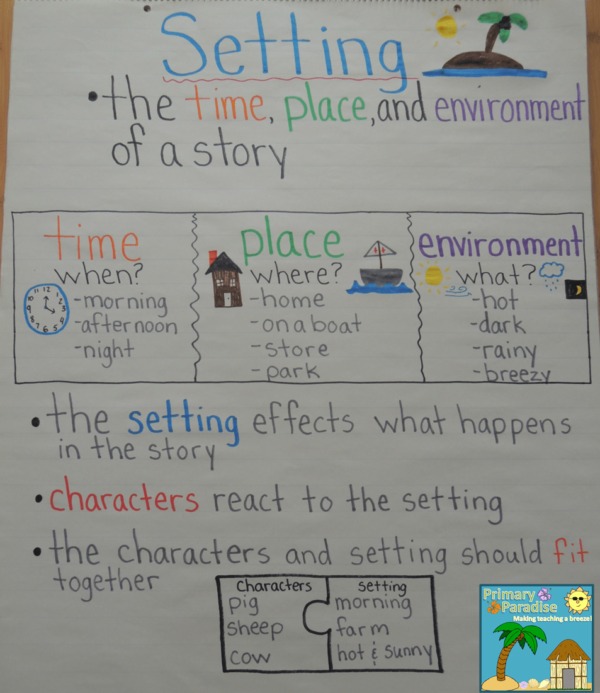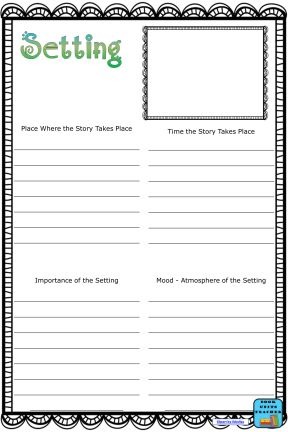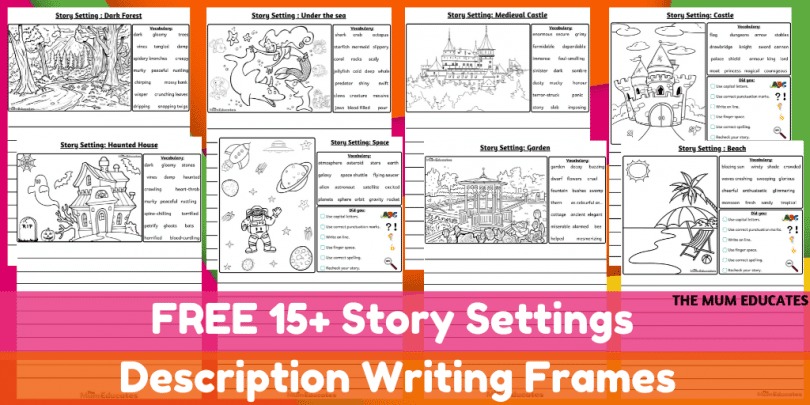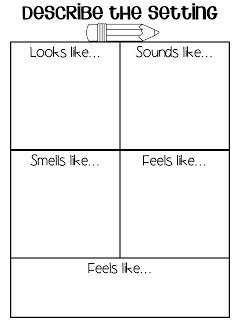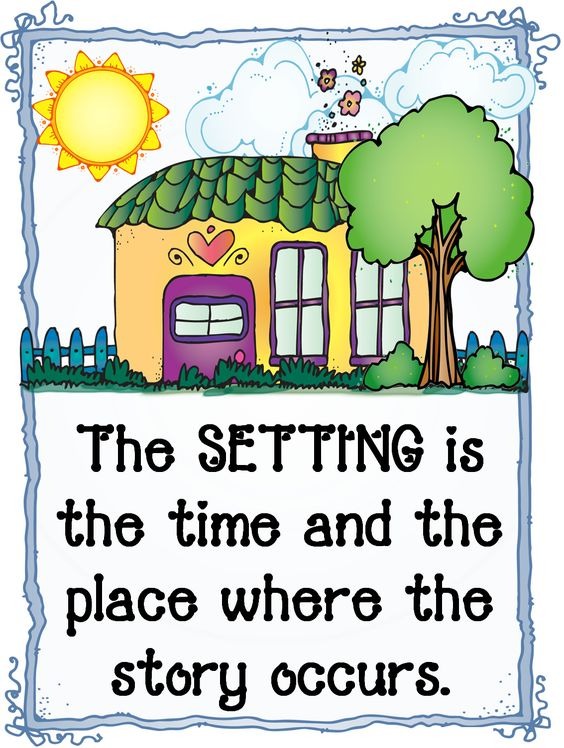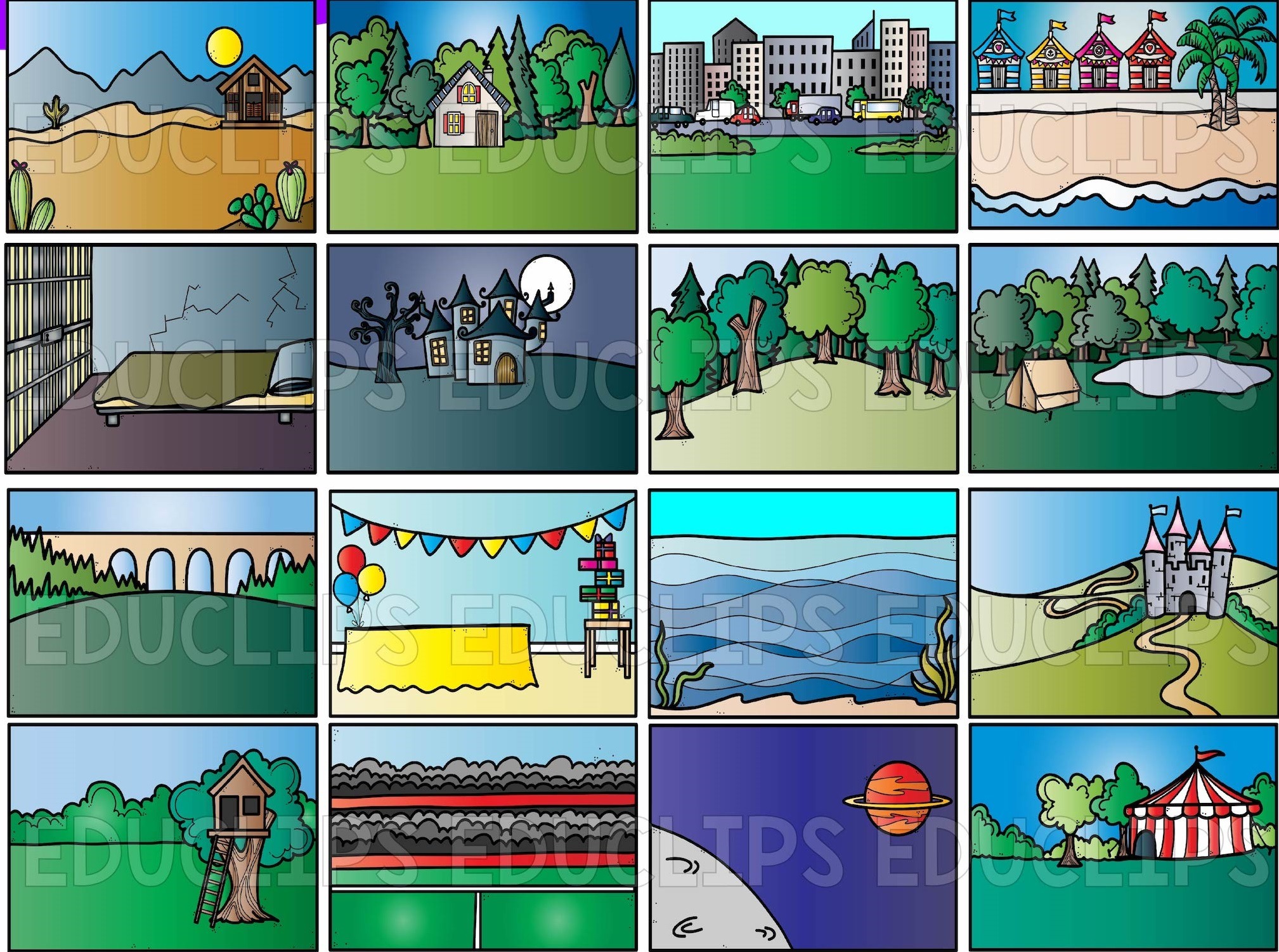Every story has a setting. That is, a place, a time, and other details surrounding the action that takes place. The setting affects who the characters in a story are and how the action plays out, so it’s important for students to understand the where and the when of stories. This is necessary both for analyzing literature, and when students are composing their own creative writing.
Making or buying a setting anchor chart to display in your classroom can help students remember this story element, as well as inspire them to get creative and specific when they craft their own stories.
Table of Contents
- Elements of a Good Setting Anchor Chart
- Setting Anchor Charts Resources from Teach Simple
- Setting Anchor Chart Examples from Teachers
- Free Setting Anchor Chart Resources
Elements of a Good Setting Anchor Chart
Whether you’re creating an anchor chart from scratch or looking for one to purchase, it needs to be quick and easy to understand. This begins with a strong, clear title. Something as simple as “Setting” will do the trick, but don’t shy away from getting creative.
Next, use words to define what a setting is. This should be determined by the age of your students. If targeting very young students, you might be best off simply using the words “time” and “place.” For older students, you have wiggle room to be as verbose as you deem necessary.
After that, a good anchor chart always gives examples. You can provide a few or many, depending on your students’ ages and your learning objectives for them. If you want them to understand the concept of setting for the primary purpose of story analysis, it might be best to give limited examples. Only as many as it takes to get the concept across and still have an uncluttered anchor chart. If your learning objective is more in line with sparking creative juices, then consider including many examples, ranging from basic to more outside the box. Have some fun with it!
Remember to make your anchor charts visually appealing. Consider using color to make it interesting and to help lay out information clearly. Pictures are always a great idea! They make information much easier to digest, and they just make it so much more attention-grabbing and fun. Take care to not get too carried away with color and pictures, though. Keep in mind that part of making anchor charts visually appealing is also making sure the layout is clear and simple to understand.
Lastly, can you make your anchor chart reusable? A lot of teachers make anchor charts that use post its or some other reusable element. This way, students can participate in the creation of the anchor chart, and you have unlimited opportunities to practice with them and with future classes.
For more inspiration on sourcing your own setting anchor chart, have a look at the following resources and examples.
Setting Anchor Charts Resources from Teach Simple
- Learning About Setting Anchor Chart By First In Line
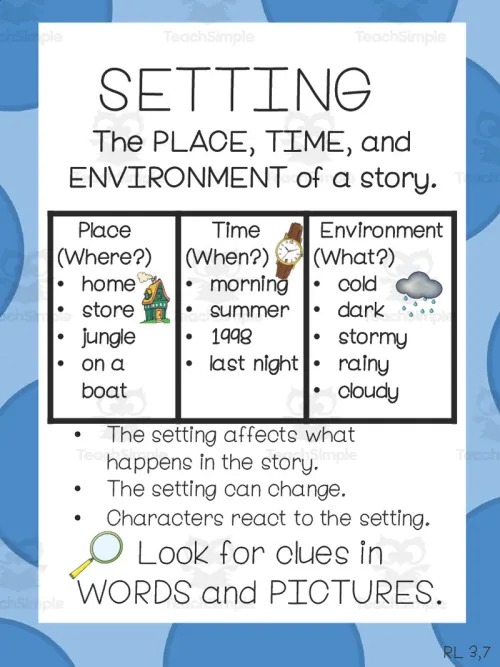
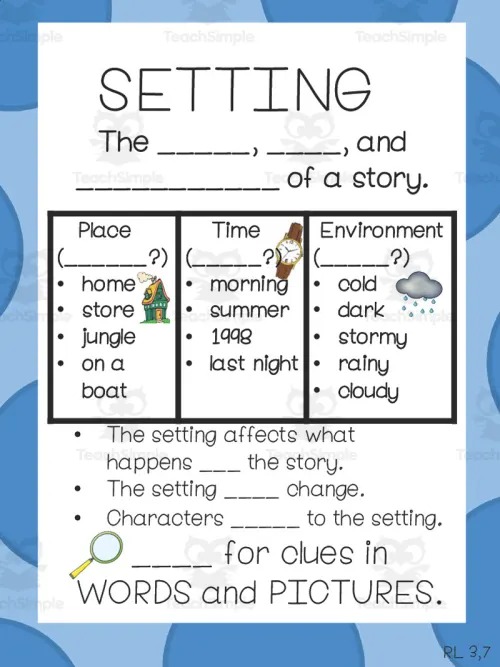
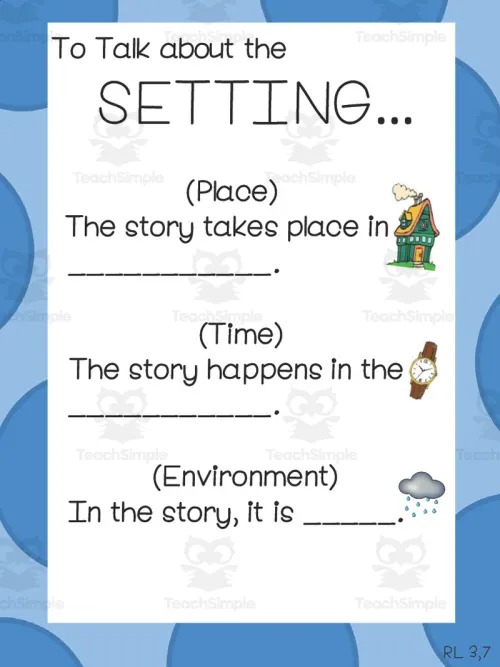
This anchor chart begins with a simple definition, and then lists examples under three columns: place, time, and environment. Some bonus tips are given underneath. This printable PDF also includes a couple of fill-in-the-blank sheets for students to fill out.
Setting Anchor Chart Examples from Teachers
- 6 Ways to Make Story Settings Vivid From Now Novel
Perfect for your creative writing students, this anchor chart gives your young authors six considerations for choosing a story setting. These include use detail, learn from others, make vital to plot, show time’s effect, use symbolism, and evoke the senses. Further explanations and examples from well-known books are included.
- Settings And Characters From Teaching With A Mountain View
As this anchor chart states, “settings and characters fit together like a puzzle.” Broken into two columns, one for settings and one for character, we see examples of how settings and characters, and how they influence each other. Bonus points for the cute drawing of puzzle pieces in the title.
- Settings And Characters From One Extra Degree
Similar to the above anchor chart, this one also demonstrates the connection between setting and characters.
- Get The Scoop On Story Elements From Krazee 4 Kindergarten
While not exclusively focused on setting, this anchor chart is too cute to resist! It’s an ice cream cone stacked high with colorful scoops of ice cream. Each scoop represents a different one of the story elements, including setting. So creative!
- Getting Descriptive From Hello Literacy
This anchor chart describes setting in several bullet points. Beneath that, it gives four examples of descriptions for an icy setting, rating them for how descriptive they are. Now, sometimes less is more, so a lengthy description is not necessarily better than a short one. But it’s a good idea to prompt our students to dig deep when they are first learning to be creative.
- A Simple Setting Anchor Chart By Teacher Miss Win
For younger students, a very basic anchor chart works best. This one is simply titled, “Setting,” and provides the definition of “where, when and what of the story” The definition is surrounded by cute drawings. That’s certainly enough right there to help young students understand what setting is.
- A More In-Depth Setting Anchor Chart From We Are Teachers
Here, we see setting divided up into three categories: place, time, and environment. Each comes with examples for what that might be, such as store, jungle, morning, the year 1803, cold, and rainy. This is written and drawn out cleanly on a sheet of notebook paper. We can see in the picture that it’s stuck to a whiteboard with a couple fun magnets. But it would also be great tucked into a student’s creative writing folder.
- Ideas For Settings From One Extra Degree Teaching
How smart to put a setting anchor chart in landscape mode. There is a beautiful drawing at the top of a house with a smoking chimney and a grassy hillside, the sun shining down on this lovely pastoral setting. Below that, we get many examples of different setting elements, such as “bed,” “February,” “The White House,” “future,” and “the Kalahari.” Given the number of ideas listed, this would be ideal for helping a creative writing class think of outside the box settings.
- Not Just Outside, Not Just Inside By Mrs. Sims & Ms. Mathis’ 4th Grade Math Website
This anchor chart provides a list of setting ideas to help students get more specific than simply “inside” or “outside.” The chart is separated into two columns for both interior and exterior settings and then provides examples for both such as, “in the mountains” or “in a fish tank.”
- Large Story Setting Poster From Primary Paradise
It’s always great if you can make an anchor chart as a project with your students, and it’s certainly cheaper when your learning materials are homemade. But sometimes you just need something to show up in the mail, ready to start the school year with you!
Free Setting Anchor Chart Resources
- Setting Of A Story Worksheet From Book Units Teacher
This free printable has four writing prompts for students to describe a setting. A box is also included at the top for students to draw that setting. This worksheet could be used to analyze a story they’ve read, or to stimulate their own creative process.
- 15 Free Story Settings Description Writing Frames From The Mum Educates
This blog post contains 15 free printable PDF pages of different setting writing prompts. Each one is for a different setting, such as an enchanted castle, under the sea, or a haunted house. The pages each include a lovely black and white picture of the prompt at the top, perfect for coloring in. Beside the pictures are vocabulary banks full of juicy words that students might use to describe each setting. And then the bottom half of the page is space to write in a description for that setting.
- Cut And Paste Setting Freebie From Keeping It Cool At School
This free PDF is great for younger students. The page includes a number of pictures for students to cut out at the bottom, and then glue to the blank space above labeled “setting.” Not every picture included is of a setting though, so students will get practice determining proper examples.
- Describe The Setting Worksheet From Collaboration Cuties
You can print this worksheet out for students to fill in the five writing prompts listed for a setting: “Looks like,” “sounds like,” “smells like,” “feels like” (physically), and “feels like” (mood). This can then be displayed on the wall or kept in folders as a quick reference.
- The Simplest Setting Anchor Chart From First Grade Wow
We don’t always have the time, energy, or resources to make an anchor chart for everything we’d like to. If you want a great-looking anchor chart that defines what setting is clearly and has one solid picture example, go ahead and print this color setting anchor chart for free to hang up in your classroom or for students to keep in their binders.
- Free Setting Clipart From Educlips
Another route you can go is to make your own digital setting anchor chart. This resource provides free clipart related to setting. Put together what you need for your class and voila! Your own custom printable.
Setting isn’t the most complicated concept, but students will surely appreciate having an anchor chart to help remind them of what story setting entails, as well as having creative inspiration for their own stories.
